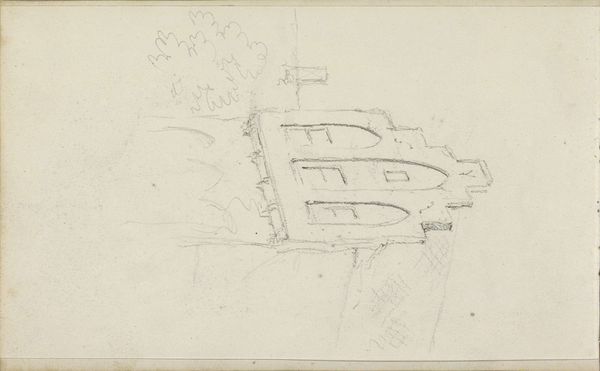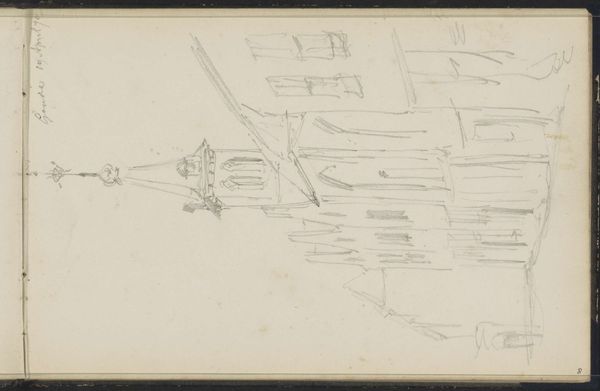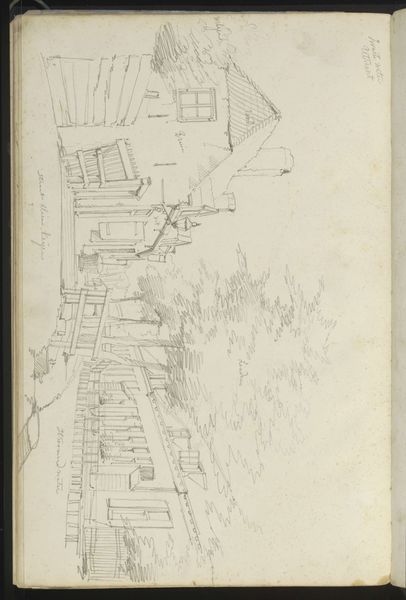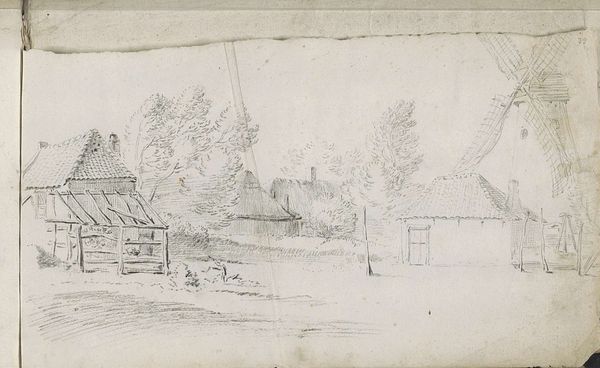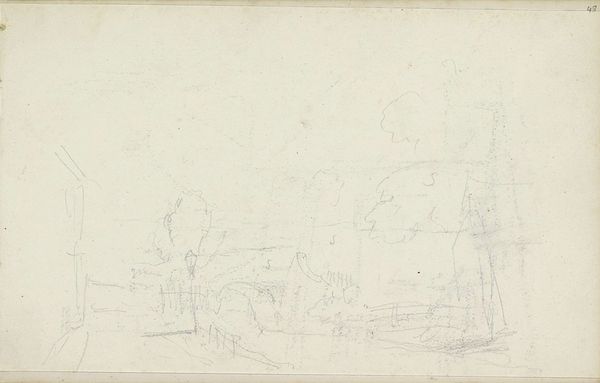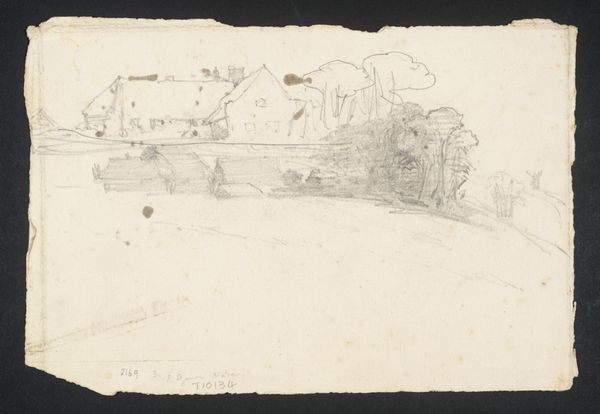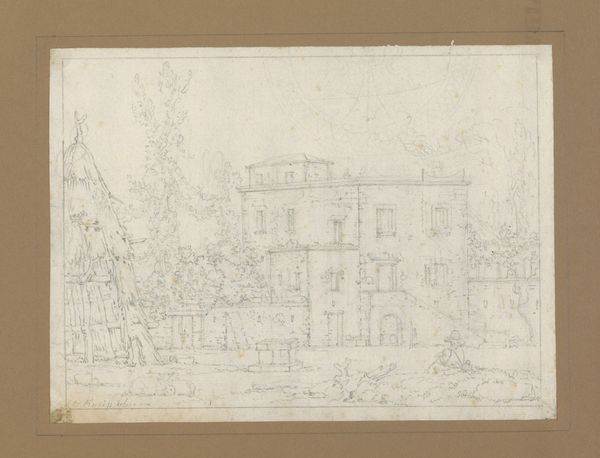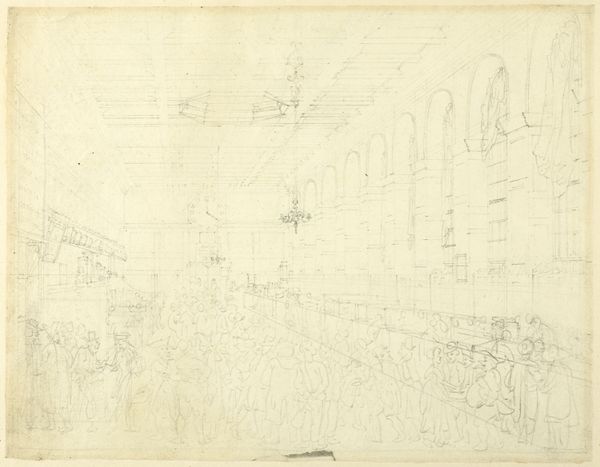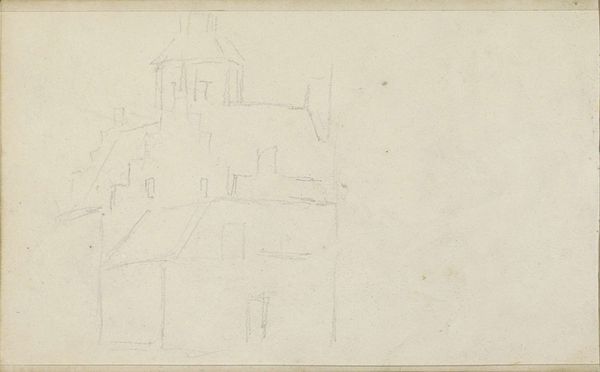
drawing, pencil
#
drawing
#
baroque
#
landscape
#
pencil
#
line
#
realism
Dimensions: height 171 mm, width 308 mm
Copyright: Rijks Museum: Open Domain
Curator: This is "Trekschuit," a pencil drawing likely sketched between 1683 and 1733 and currently held here at the Rijksmuseum. It’s attributed to Bernard Picart, capturing a typical canal scene. What’s your first impression? Editor: Bleak, almost haunting. The scene seems sparse and somewhat ghostly, as though it captures not the bustle of trade but a lingering memory of it. All these shades of gray evoke stillness. Curator: The ‘trekschuit’ itself was a significant mode of public transportation in the Netherlands. It was a shared taxi service across the Dutch canals that profoundly shaped social connections. Notice the almost scientific interest with which the lines demarcate its dimensions. It suggests an effort to record for prosperity this typical feature of society. Editor: It’s interesting that you call attention to the drawing's almost photographic exactitude in relation to social value, because the imagery to me reads very specifically, as evoking this cultural value in memory. I am reminded that water often symbolizes the subconscious, while boats signal transitions and journeys. Do you think Picart saw the cultural implications of canals changing as his social reality did? Curator: That's a valid point, though not definitively answerable with extant knowledge of Picart. Consider however the positionality and power encoded in depicting a very popular form of transportation. Its ubiquity and social function is perhaps why the artist may have rendered the boats without apparent aesthetic treatment, because these boats and canals in themselves embodied a cultural shift towards centralized mobility for common society. Editor: It's precisely this ambivalence, the tension between cultural symbol and social utility, that makes the drawing so engaging. Perhaps, intentionally or otherwise, the lack of vivid detail underscores its transient nature. The drawing can be interpreted not merely as an image of a 'trekschuit', but also a rumination on time and the fleeting imprint of culture in lived experience. Curator: Perhaps. Regardless of our divergent readings, the work reminds us of the significance of this seemingly humble vessel in shaping not just the landscape, but also the social landscape of the Netherlands. Editor: A valuable reminder that the images we encounter daily – whether captured in sketch or lived on the canals– possess the capacity to stir memory and prompt cultural analysis, echoing the shifts within us.
Comments
No comments
Be the first to comment and join the conversation on the ultimate creative platform.


